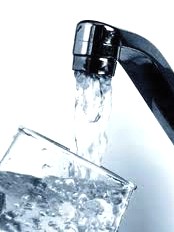|
||||||||||||||||||
|
|
Haiti - Reconstruction : (VII) Water and sanitation - Strategic Plan 10/01/2011 07:20:26
While donors begin to fulfill their pledges and have difficulty accessing the facts about what is needed most on the ground, many are asking how to prioritize their spending. The strategic plan presented at the fourth meeting of the IHRC, December 14, 2010 at Santo Domingo in the Dominican Republic, will help guide the project implementers, donors and investors as they guide the disbursement of their pledges for the reconstruction and development of Haiti, and add much needed new funding. Developed jointly by the Commission, international experts and ministry leaders, this plan outlines many of the most important things needed in Haiti by October 2011, the end of IHRC’s mandate. Each day of the week we'll discover a part of this strategic plan for 2011. Today we cover the water and sanitation. The Government of Haiti has recently developed a strategy for water through a closely coordinated effort of all major partners, under the leadership of the water department (DINEPA) of the MTPTC. A law on water was also passed last year and a new structure for the water department was enacted as well. These initiatives illustrate the will of Haiti to come to grip with a water problem that had become a top national and international priority. Substantial funds were approved by various donors (IDB and Spain notably) that allowed for the implementation of the water strategy to be implemented. Such implementation will take several years due to the scale of the problem, from protection of water sources, construction of main pipes, renovation of water systems in most urban areas, quality assurance, cost recovery, governance. The cholera outbreak has illustrated the need for such a strategy. It also increased the level of urgency associated with its implementation, resulting in a more immediate need of additional funds. Target outcomes A. Bring the sustainable access rate to controlled potable water from 2% to 50% – Today hardly anyone in Haiti has access to drinkable water. By the end of 2011, 6.5 million people will have access to chlorination out of whom 5 million will have a guaranteed long term access to chlorination: 3 million in urban areas, 1.5 million in rural or semi-urban areas, 500,000 in remote areas and 30,000 families in sensitive areas. Chlorination will be controlled by DINEPA on a regular basis throughout the territory. B. Bring the access rate to toilet / latrine meeting international standards from some 10% to at least 27% – Over 250,000 persons in the metropolitan area and 2.5 million other persons will have access to a latrine by end of 2011, according to the norms circulated by DINEPA. Rationale Facing the magnitude of the recent cholera outbreak, the DINEPA developed a response strategy that spans a period ending at the end of 2011. This strategy was publicly announced on November 24th. The recent epidemic is a direct consequence of neglected sanitary conditions and access to potable water, which in fact have been deteriorating for the last 10 or 20 years. The DINEPA strategy, although presented in that context, aims more broadly to develop the necessary tools for a rapid improvement that would be controlled and measurable as well as to develop the foundations for a sustainable management of the infrastructure. The financing plan of this strategy is ambitious but fully integrates the funding already committed and that at work in implementation. It plans to redirect money to those priorities or simply to accelerate the implementation process where possible. Required programs To achieve the above target outcomes, the following programs will need to be implemented: A. Bring the sustainable access rate to controlled potable water from 2% to 50% – Access to local procurement of chlorinated products along Government norms. – Renovation or upgrading of the urban water networks to the standard of the Drinkable Water Supply Program. – Setting up of additional water points in remote zones in rural areas. – Creation of drinkable water stations in areas at risk (lower-Artibonite) – Certification of bottled water B. Bring the access rate to toilet / latrine meeting international standards from 0% to 27.5% – Sanitation program in the camps of the metropolitan zone. – Campaign to build and install latrines in rural and semi-urban areas. – Setting up of infrastructure and system for disposal of human wastes. C. Programs contributing indirectly to outcomes A and B – Hygiene promotion campaign – Reinforcement of national and regional coordinating and management capacity. – Deployment of sanitary workers throughout the territory. – Sensitization and distribution (soap, hygienic kits) programs in schools. – Support to health centers, including cholera treatment centers and units. Funding requirement The total funding needed to achieve the target outcomes detailed above is $69.9M. A total of approximately $35M have already been directly committed to these outcomes by IDB, AECID and the World Bank. Other funds have also been committed by several other organizations including for instance NGOs and UN agencies, which bring the total commitment to approximately $51M. In order to meet the above prescribed target outcomes, the program is therefore still in need of approximately $19M. Interdependencies with other sectors/u> The water & sanitation sector is heavily linked with the Health sector. The Ministry of Health and DINEPA have shared the strategy for cholera response and plan to sign a Memorandum of Understanding. To that effect, please refer to the short description of the cholera outbreak response to date in the Health section of this document. See also: https://www.haitilibre.com/en/news-2033-haiti-reconstruction-i-housing-strategic-plan.html https://www.haitilibre.com/en/news-2040-haiti-reconstruction-ii-debris-removal-and-management-strategic-plan.html https://www.haitilibre.com/en/news-2047-haiti-reconstruction-iii-education-strategic-plan.html https://www.haitilibre.com/en/news-2054-haiti-reconstruction-iv-health-strategic-plan.html https://www.haitilibre.com/en/news-2062-haiti-reconstruction-v-energy-strategic-plan.html https://www.haitilibre.com/en/news-2066-haiti-reconstruction-vi-job-creation-strategic-plan.html https://www.haitilibre.com/en/news-2082-haiti-reconstruction-viii-reinforcement-of-institutions-strategic-plan.html https://www.haitilibre.com/en/news-2082-haiti-reconstruction-viii-reinforcement-of-institutions-strategic-plan.html HL/ S/ HaitiLibre/ CIRH
|
|
|
Why HaitiLibre ? |
Contact us |
Français
Copyright © 2010 - 2024 Haitilibre.com |



